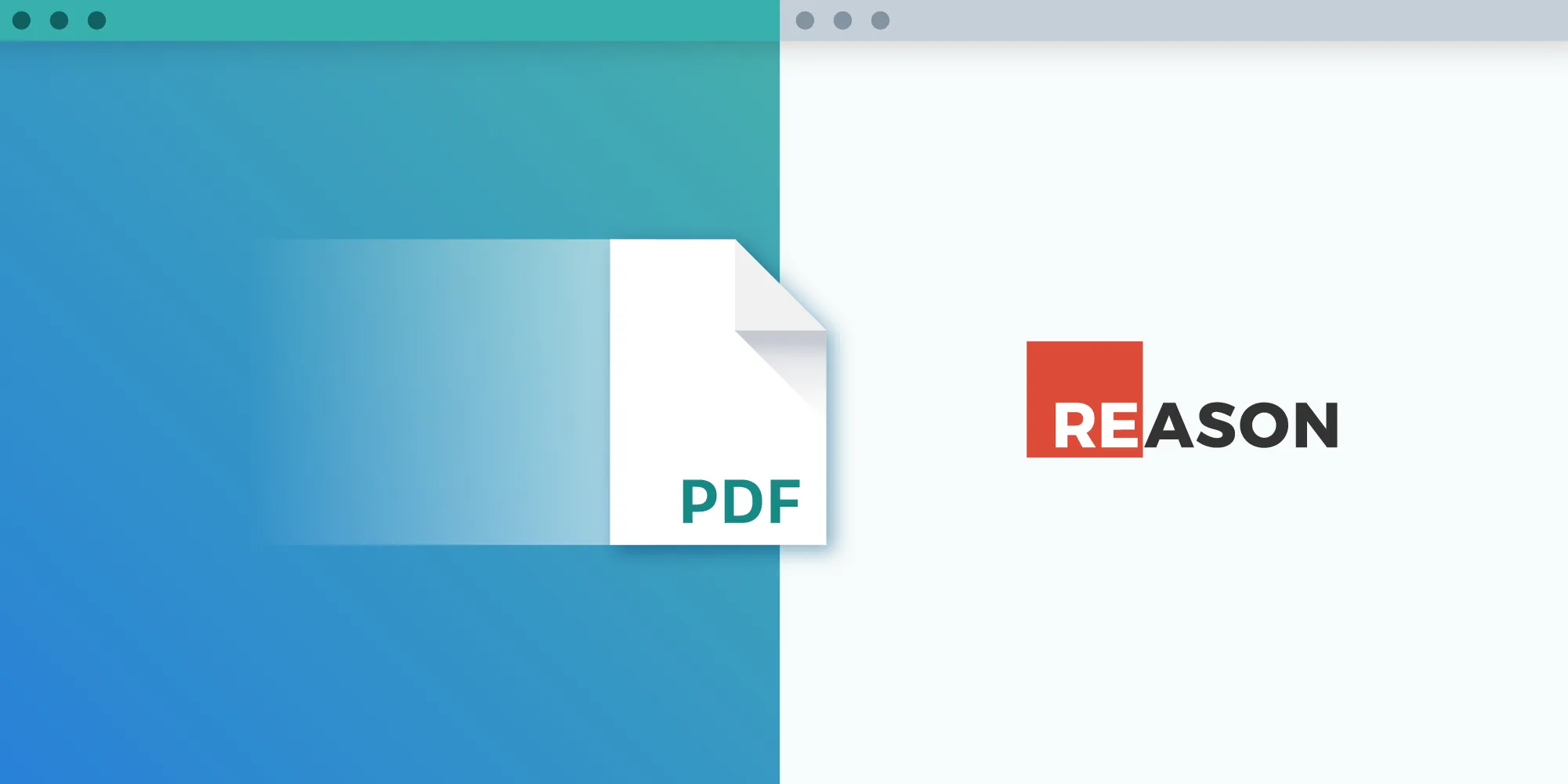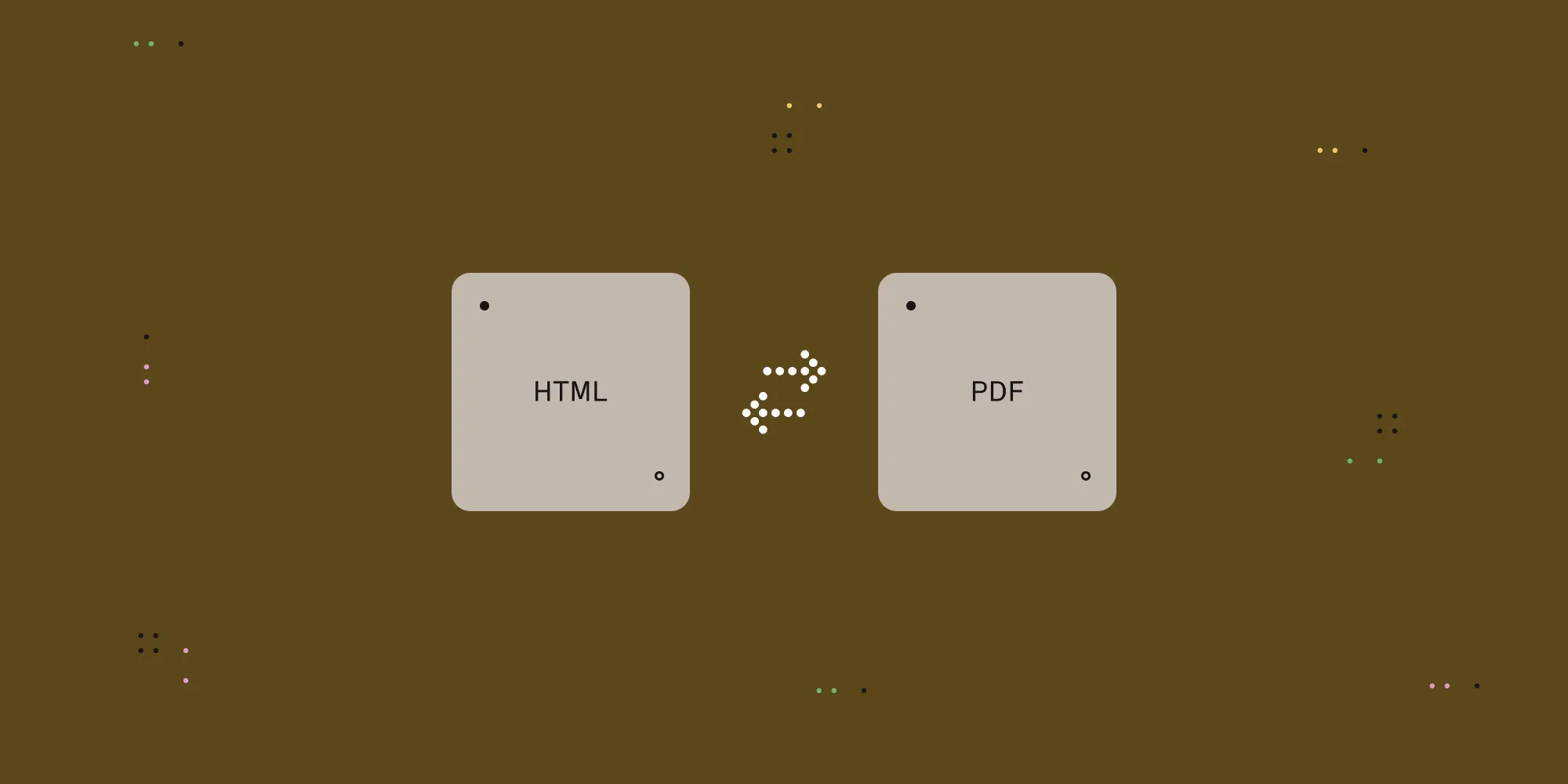Open PDF Documents with ReasonML
Table of contents

Our team loves experimenting with new technologies, so it should come as no surprise that, for some time, we’ve been playing around with ReasonML(opens in a new tab), which is popularly used together with ReasonReact(opens in a new tab).
At this point, you can find pretty much every kind of library for ReasonML, especially given the fact that it can use any JavaScript library out there. However, implementing the libraries can be tricky if you’re not familiar with the correspondence between both languages. Moreover, if you’re building a web application, you need to handle web APIs in a “reasonable” way.
In this blog post, I will explain how we figured things out when we wanted to use PDF.js(opens in a new tab) in a sample ReasonML app that was not paired with any frontend framework.
PDF.js has been around for a while, it’s free, and it includes just enough features to get us going for this example. We have already written about how to use it to render PDF files in the browser, and we covered how to use it to build simple interfaces for loading and viewing PDF documents like the one we’ll build today. So if you’re not quite familiar with it, consider reading those blog posts first.
Initial Setup
Tooling
For our purposes, using BuckleScript(opens in a new tab) (plus webpack(opens in a new tab) for bundling the resulting assets) is enough. If you want to integrate your modules into a larger JavaScript app, you can use the compiled .bs.js files.
Let’s start by installing the necessary tools:
npm initnpm install -D bs-platform Set Up bsconfig.json
For BuckleScript to recognize the APIs we’ll use, namely the Web API(opens in a new tab) and the PDF.js API(opens in a new tab), we’ll borrow the bindings available as npm packages:
npm install --save pspdfjs-distnpm install -D bs-webapi bs-pdfjs@0.4.0BuckleScript uses a settings file similar to package.json. We need to set it like this for our experiment:
{ "name": "open-pdf-with-reasonml", "sources": [ "src" ], "package-specs": [{ "module": "commonjs", "in-source": true }], "suffix": ".bs.js", "namespace": true, "bs-dependencies": [ "bs-webapi", "bs-pdfjs" ], "refmt": 3} Set Up index.html
Before we dive into the viewer implementation, we’re going to lay down a minimal HTML skeleton for our application directly in our dist folder. We’ll use the CDN-hosted version of PDF.js from unpkg(opens in a new tab), but this file could also be downloaded and hosted locally:
<!DOCTYPE html><html lang="en"><head> <meta charset="UTF-8"> <title>Open PDF with ReasonML example</title></head><body><div id="app"> <canvas><canvas></div><script src="https://unpkg.com/pdfjs-dist@2.0.489/build/pdf.min.js"></script><script src="main.js"></script><script> initPDFViewer([’assets/default.pdf'], document.querySelector('#app'));</script></body></html>Set Up ReasonPDFjs.re
This is the tricky part of the task: We need to call the necessary functions from the Web API and the PDF.js API for BuckleScript to be able to compile our code into common JavaScript.
So first we’ll create an initPDFViewer function that accepts the URL of a PDF file. Since PDF.js will fetch the PDF file making an AJAX request, our viewer needs to run on a web server. Otherwise, the browser will block the request for security reasons.
Inside initPDFViewer, we get the document, save a reference to its instance and the count of the pages, and render the first page:
open Webapi;
let initPDFViewer = (pdfURL, container) => { // Get the document with the PDF.js `getDocument` method. let documentPromise = BsPdfjs.Global.inst |> BsPdfjs.Global.getDocument(pdfURL); documentPromise |> Js.Promise.then_(document => { // Get the document's first page. let pagePromise = document |> BsPdfjs.Document.getPage(1); pagePromise |> Js.Promise.then_(page => { // Get the viewport. let pdfViewport: BsPdfjs.Viewport.t = BsPdfjs.Page.getViewport( ~scale= container##offsetWidth /. BsPdfjs.Viewport.width(BsPdfjs.Page.getViewport(~scale=1., ~rotate=0., page)), ~rotate=0., page, ); // Get the canvas element from the current browser page. let canvas = switch (Dom.document |> Dom.Document.querySelector("canvas")) { | None => print_endline("cant get canvas\n"); failwith("fail"); | Some(el) => el }; // Get the canvas context. let context = CanvasRe.CanvasElement.getContext2d(canvas); // Set the canvas dimensions to those of the viewport. canvas |> Dom.Element.setAttribute("width", string_of_float(BsPdfjs.Viewport.width(pdfViewport))); canvas |> Dom.Element.setAttribute("height", string_of_float(BsPdfjs.Viewport.height(pdfViewport))); // Render the page in the canvas. BsPdfjs.Page.render(page, ~canvasContext=context, ~viewport=pdfViewport, ~transform=Js.Option.some([||])) |> ignore; Js.Promise.resolve(page); }) |> ignore; Js.Promise.resolve(document); });};The above consists of only a few lines of code, but it can take a long time to get them to work until you determine how to make the calls the ReasonML way.
Now we will add an index.js file that will import the compiled ReasonPDFjs.bs.js file and assign the function to the global window object:
src/index.js
window.initPDFViewer = require("./ReasonPDFjs.bs").initPDFViewer;We cannot run this file in the browser, as require is not available there. But just adding webpack to our toolset will help us create a bundle our browser can run. So let’s set it up in our package.json file along with serve(opens in a new tab), which we will use to access our demo locally:
package.json
{ "name": "open-pdf-with-reasonml", "version": "1.0.0", "main": "index.js", "license": "MIT", "scripts": { "build": "bsb -make-world && webpack", "start": "serve ./dist", "clean": "bsb -clean-world" }, "devDependencies": { "webpack": "^4.29.0", "webpack-cli": "^3.2.1", "bs-pdfjs": "0.4.0", "bs-platform": "^4.0.18", "bs-webapi": "^0.13.1" "serve": "^10.1.2" }, "dependencies": { "pdfjs-dist": "^2.0.943" }}Compile
Now, let’s install the missing dependencies:
npm installThen we’ll compile our ReasonML code to JavaScript and bundle up our compiled code and its dependencies. We will see a bunch of wise, well-intentioned warnings which will not prevent us from getting the result we want at this point:
npm buildRun
Now we just need to serve our content:
npm startAnd then we need to open http://localhost:5000 to see our ReasonML PDF viewer in action!
Conclusion
Over the course of this post, we have gone through the process of setting up a simple PDF viewer using ReasonML and PDF.js without any additional frontend framework. Once we got ReasonML to play with PDF.js by means of the corresponding bindings, the task wasn’t as overwhelming we thought it would be.
You can check out this example here(opens in a new tab).
And if you also want to have a look at how a full-blown, feature-rich PDF viewer and annotator looks and works, don’t hesitate to go straight to our live demo(opens in a new tab)! If you find it might fit your needs, you can try it out with our free trial!







